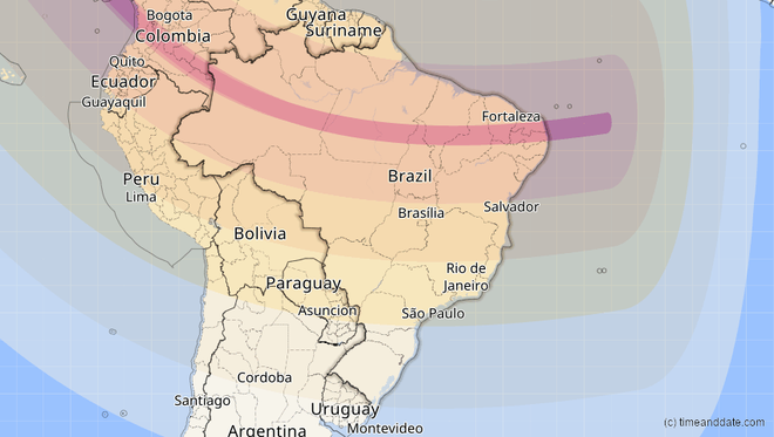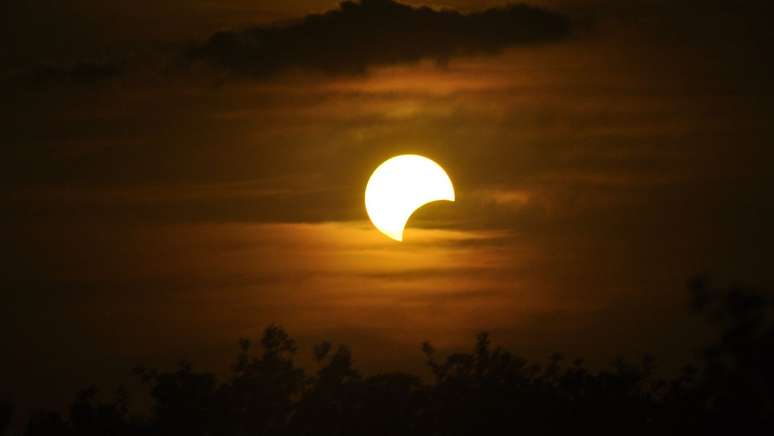The National Observatory, NASA and the Time and Date website will broadcast next Saturday’s solar eclipse (14) in a six-hour event
This Saturday (14th) a solar eclipse will occur. be visible in several regions, including Brazil. The Moon will cover part of the solar disk during the phenomenon, and you will be able to follow everything through the observations and transmissions of the National Observatory (ON), carried out by an integrated action with Brazilian and foreign partners.
During solar eclipses, the Moon is between the Earth and the Sun, completely or partially hiding our star. In this week’s eclipse, the Moon will be a little further away from Earth, so that the edges of the solar disk will remain visible and form the so-called ring of fire.
The phenomenon will be visible for the first time on the west coast of the United States, starting at dawn. Over the course of the day, as the Sun rises above the horizon, the eclipse will be visible in other places on the American continent. The phenomenon ends in Brazil.

To ensure that no one misses the eclipse, the National Observatory is coordinating the actions of its international partners to share images of the eclipse as it occurs in the United States, Central America and Colombia. Then, when the phenomenon begins in Brazil, it is the turn of Brazilian astronomers to provide their images to the teams from the Time and Date website and the Time and Date website. NASA.
ON will broadcast the annular eclipse from 11.30 am, following the entire path of the annularity until it is visible in our country. Therefore, what would be a phenomenon lasting a few minutes will become a major event lasting six hours.
To follow along, just watch the broadcast in the video below.
You can also access the live broadcast on the National Observatory channel on Youtube.
The solar eclipse of 2023
Dr. Josina Nascimento, astronomer at the National Observatory, explains that the annular band (the area where the eclipse is seen as annular) will pass through states such as Amazonas, Pará, Maranhão, Piauí, among others. In the rest of the national territory the eclipse will be partial.
It is worth mentioning that you need to take some precautions observe the solar eclipse safely. For this purpose, suitable filters or indirect observation methods can be used – and under no circumstances should you look directly at the Sun during the phenomenon without adequate eye protection, as exposure to light causes irreversible damage to the retina.
Trends on Canaltech:
- What will the 2023 solar eclipse look like?
- Sound of Freedom | Why has a Christian film become the subject of controversy?
- What is the tolerance for not being fined for a speed camera?
- 🤑EXCLUSIVE COUPON | Buy the Galaxy S23 Ultra at one of the lowest prices
- The function to create channels on WhatApp is available to everyone
- Meet the Brazilian chosen by NASA to witness the launch of Psyche
Source: Terra
Rose James is a Gossipify movie and series reviewer known for her in-depth analysis and unique perspective on the latest releases. With a background in film studies, she provides engaging and informative reviews, and keeps readers up to date with industry trends and emerging talents.





